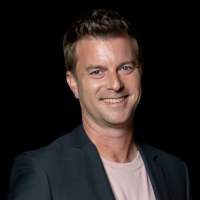Apple’s latest and greatest iPad Pro is getting a feature that’s only recently made its way into televisions and is already transforming that industry. Along with a new iMac, Apple TV 4K, and Air Tags announced at the Apple Spring Loaded event on April 20, 2021, the company debuted a new 12.9-inch version of its iPad Pro which comes with a new Liquid Retina XDR display powered by mini-LED technology. Here’s what that means and how it will improve the iPad experience.
Backlight Basics
To better understand mini-LED backlighting tech, it helps to know how LCD-based screens like those used in phones and tablets have historically worked. Unlike OLED screens which have individual pixels that generate their own light (called an emissive display), LCD screens need a light source.
That light will shine through several layers, including a color filter, before reaching the LCD layer, which is primarily responsible for either opening a pixel so light may pass through, or shutting it down so light can not pass through, thus creating black.
In recent years, LED lights arranged in a grid at the very back of the display panel have functioned as that light source. In the case of the iPad, the number of those LEDs was capped at around 72, according to Apple. This “array” of lights could be broken down into zones that could be dimmed as part of a full-array local dimming system — tech that’s existed in TVs for some years now.
With the new 12.9-inch iPad Pro with Liquid Retina XDR display, the backlight system will be comprised of much smaller, so-called mini-LEDs, and there will be many more of them. About 10,000 mini-LEDs, according to Apple. By the numbers alone, that’s clearly a massive shift. But what will this backlighting tech bring to the new iPad?
Brighter, blacker, better
In short, the new 12.9-inch iPad Pro will be capable of getting much brighter, while also having better black levels and an expanded color volume. Apple says that the Liquid Retina XDR display will be able to hit 1,000 nits of brightness on average, with up to 1,600 nits of brightness for HDR highlights. If you’re not familiar with nits as a brightness measurement, just know that most HDR TVs struggle to hit those kinds of numbers. That’s right, the new iPad Pro will have a vastly superior display than all but the best 4K
The mini-LED backlight achieves this through more power for brightness, and better control. With 10,000 mini-LEDs, the display will be able to juice up bright areas where needed, while keeping dark areas dark, resulting in a claimed contrast ratio of 1,000,000:1 — which is massive. Since there are so many mini-LEDs, the screen’s full-array local dimming system can break up the matrix of lights into hundreds if not thousands of zones, providing very precise control that could never be matched by conventional LED backlighting systems.
Will it really be that good?
Yes. The new Liquid Retina XDR display will be stunning to behold. This mini-LED backlight tech has already provided massive improvements for LCD-based TVs, so we can expect Apple’s implementation in an iPad will do the same. High Dynamic Range (HDR) images have a way of making a picture pop that could never be achieved with simple boosts in resolution. When Apple says this is the most impressive iPad it’s ever made, it’s not just blowing smoke.
Editors' Recommendations
- Apple accidentally revealed a big iPad Pro display upgrade
- This is when Apple will finally release its new 2024 iPads
- Apple may announce new iPads next month. Here’s everything we expect
- Apple’s 2024 iPad plans leaked — and they sound bad
- Apple has an iPad shocker planned for early 2024



